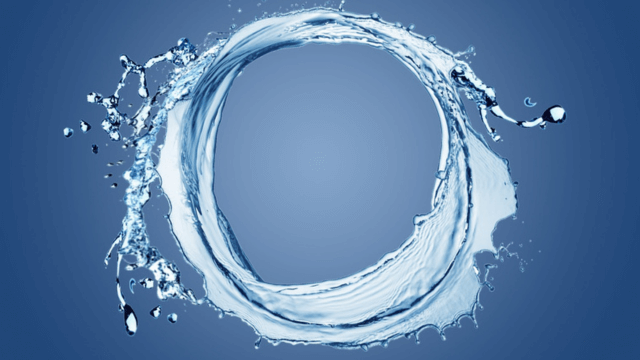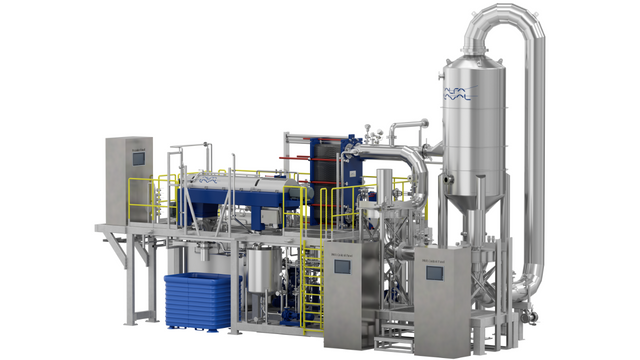The thermodynamics of Zero Liquid Discharge: When does ZLD make sense?
In an era of increasing water scarcity and stringent environmental regulations, Zero Liquid Discharge (ZLD) technology is gaining attention as a sustainable solution for industrial water management. But how do we determine when ZLD is the right choice? Interestingly, the first and second laws of thermodynamics offer valuable insights into this decision-making process.
DATE 2025-11-11I am a chemical engineer, and I use thermodynamics to clean water. I work at Alfa Laval and I design ZLD systems and work to find applications where they are a good fit. It is very important to me that we focus our time and energy in the right place, we only have so much of it. In an era of increasing water scarcity and stringent environmental regulations, Zero Liquid Discharge (ZLD) technology is gaining attention as a sustainable solution for industrial water management. But how do we determine when ZLD is the right choice? Interestingly, the first and second laws of thermodynamics offer valuable insights into this decision-making process.
As an interesting exercise, I wanted to explore how these fundamental principles can serve as analogies for evaluating the feasibility and practicality of ZLD projects, providing industries with a framework to approach sustainability more strategically.
Thermodynamics 101 for sustainability
To understand how thermodynamics applies to ZLD, let’s revisit the basics:
- The First Law of Thermodynamics is the law of energy conservation: energy cannot be created or destroyed in an isolated system. In water management, this is analogous to the water cycle—water evaporates, forms clouds, precipitates, and repeats. The total amount of water remains constant, even as it changes forms. Technically water can be both created and destroyed so the analogy is not perfect but as an analogy I like it and I’m sticking with it.
- The Second Law of Thermodynamics is the law of entropy: systems naturally progress towards greater disorder. In water management, clean water represents low entropy, while polluted water represents high entropy. Cleaning water—reversing entropy—requires significant energy and effort. It’s like burning a candle (easy right) versus gathering the heat and smoke to reconstruct it (nearly impossible).
These principles highlight the inherent challenges in treating wastewater and recovering clean water, offering a lens through which to evaluate ZLD projects.
What is ZLD?
ZLD technology involves a series of unit operations to separate clean water from contaminants, often through pre-treatment, reverse osmosis (RO), and evaporative crystallization. The goal is to recover as much water as possible and convert pollutants into a solid form for disposal or reuse.
The key drivers for ZLD adoption include:
- Economic: Rising disposal costs, water scarcity, and opportunities to recover value from waste.
- Regulatory: Stricter environmental laws limiting wastewater discharge.
- Sustainability: Pressure from investors and consumers to adopt environmentally friendly practices.
- Risk Mitigation: Ensuring operational continuity by securing water resources and waste disposal options
The Thermodynamic Analogy for ZLD Feasibility
- The First Law Insight: ZLD aligns with the principle of conservation. Just as water in the global cycle remains constant, ZLD systems aim to "close the loop" in industrial processes, minimizing water intake and waste discharge.
- The Second Law Insight: Reversing entropy is inherently challenging. Dirty water has high entropy, and making it clean requires significant energy. This is why ZLD projects are energy-intensive and capital-heavy—they’re working against natural tendencies. For example, treating water with high contaminant levels (high entropy) demands more complex and expensive technologies.
When clean water is abundant and disposal costs are low, the drivers for ZLD diminish. However, in regions with water scarcity or high disposal costs, ZLD becomes a viable—and sometimes necessary—solution.
Real-world decision-making
In industrial operations, water management involves balancing costs: the cost of bringing clean water in and the cost of sending dirty water out. Successful ZLD projects shift this equilibrium by reducing these costs or creating value from waste.
For instance, in regions where water scarcity increases intake costs or where disposal options are limited, ZLD helps mitigate these risks. Conversely, when clean water is readily available and disposal is inexpensive, ZLD may not be economically justified.
Actionable Insights for Decision-Makers
To evaluate the feasibility of ZLD, industries should ask:
- Does ZLD reduce operating costs?
- Does ZLD increase production?
- Does ZLD mitigate risks associated with water scarcity, disposal, or lost production?
ZLD projects require substantial investment and energy, so the drivers must outweigh these costs. Industries must assess their resource availability, waste composition, and regulatory landscape before committing to ZLD.
Misconceptions and Sustainability Goals
One common misconception is that ZLD means "zero waste." ZLD focuses on maximizing water recovery and concentrating waste for cost-effective disposal or reuse. Understanding this distinction helps industries set realistic goals and expectations. Waste treatment is dubbed as recycling when the process transforms waste to value products. Zero waste involve transforming all components into value products and this is not always possible or practical.
From a sustainability perspective, ZLD underscores an essential truth: water isn’t created or destroyed—it moves through states. The effort required to clean water highlights the importance of preventing pollution in the first place.
Conclusion
Thermodynamics provides a powerful analogy for understanding the challenges and opportunities of ZLD technology. By recognizing the energy and effort involved in reversing entropy, industries can make informed decisions about when ZLD makes sense.
As we face growing water challenges, embracing innovative solutions like ZLD—and understanding their limitations—will be key to building a sustainable future.

Patrick Horner
Role at Alfa Laval: Global Technology - Zero Liquid Discharge
Time in industry: 20 years
Area of expertise: ZLD; evaporation and crystallization technologies

